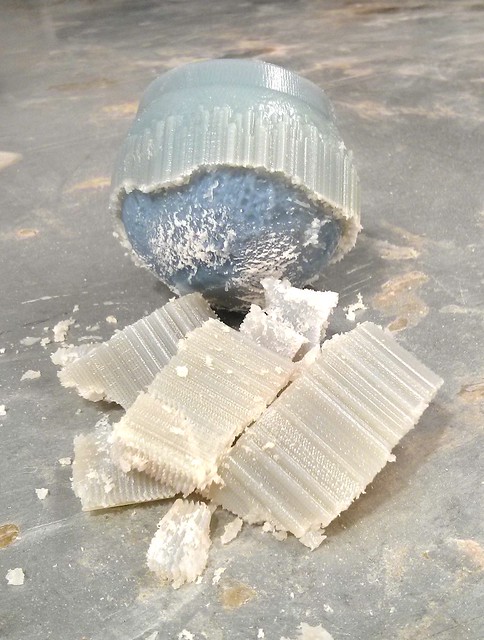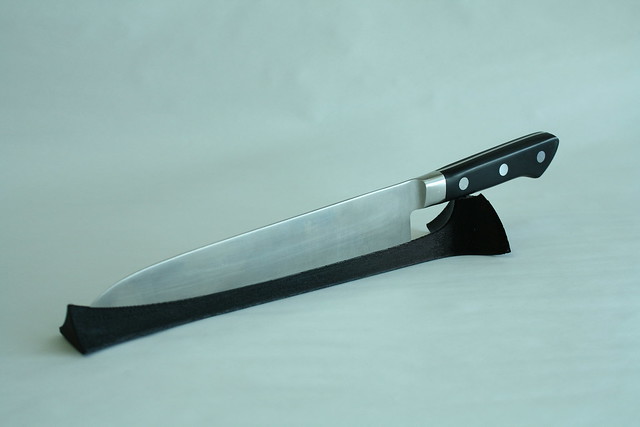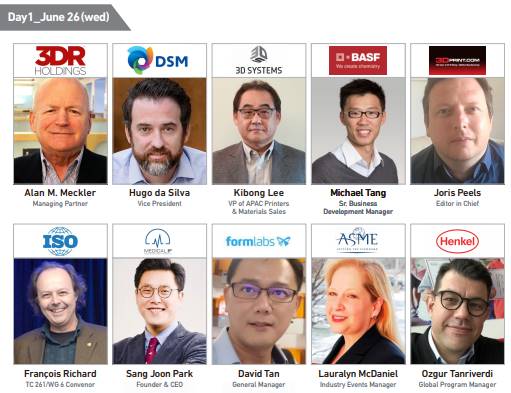3D Hangouts – Games, Hinges and Cranks #3DPrinting #3DThursday
Multistreaming with https://restream.io/
Learn Guide:
https://learn.adafruit.com/adafruit-pygamer
PyGamer
https://www.adafruit.com/product/4242
Mini Oval Speaker short wires
https://www.adafruit.com/product/4227
420mah 3.7v Lipo Battery
https://www.adafruit.com/product/4236
M3 Heat Set Inserts
https://www.adafruit.com/product/4255
Rotary Encoder
https://www.adafruit.com/product/377
Flashforge Inventor II 3D Printer
https://www.adafruit.com/product/3897
Filament for 3D Printers
https://www.adafruit.com/product/2080
PyGamer 3D model!
https://blog.adafruit.com/2019/05/29/new-cad-part-adafruit-pygamer/
Layer by Layer –
Weekly Update 2 – https://www.youtube.com/watch?v=FwS9bWHr9FQ
Timelapse Tuesday:
Castle Towers Planter – David Payne
https://www.thingiverse.com/thing:3628842
https://youtu.be/TNuI8fRyWhs
Filament for 3D Printers
https://www.adafruit.com/product/2080
Ultimaker 2+
https://www.adafruit.com/product/2673
Flashforge Inventor II
https://www.adafruit.com/product/3897
3D Parts Library on GitHub
https://github.com/adafruit/Adafruit_CAD_Parts
Hello PyGamer #reto #gaming #3DPrinting #3DThursday
Say hello to the #Adafruit #PyGamer ??It’s got a SAMD51, 1.8in TFT display with 8 buttons, accelerometer, light sensor and speaker. Also USB charging, JST ports and runs makecode, circuit python and arduino! learn.adafruit.com/adafruit-pygamer

Every Thursday is #3dthursday here at Adafruit! The DIY 3D printing community has passion and dedication for making solid objects from digital models. Recently, we have noticed electronics projects integrated with 3D printed enclosures, brackets, and sculptures, so each Thursday we celebrate and highlight these bold pioneers!
Have you considered building a 3D project around an Arduino or other microcontroller? How about printing a bracket to mount your Raspberry Pi to the back of your HD monitor? And don’t forget the countless LED projects that are possible when you are modeling your projects in 3D!
LayerCode Embeds Optical Barcodes in 3D Shapes
The ability to scan and track objects, particularly products, is a major part of the operations of many industries. Shopping centres can’t operate without them and they make factory tracking far easier. The 3D printing industry has also been tinkering with ways to insert data-carrying codes into the process. Now, Columbia researchers may have found […]
The post LayerCode Embeds Optical Barcodes in 3D Shapes appeared first on 3D Printing.
IOT Mailbox Remix – for NodeMCU ESP8266 #3DPrinting #3DThursday #3DPrinting
sfgabe shares:
These are some remix files for AdaFruit’s IOT mailbox, for use with a NodeMCU ESP8266. The original code doesn’t work anymore since GMail changed their protocol, but I modified it to be an MQTT sensor / automation instead. I also added some LED notifications on the post from @sb43201’s version. I also created a ventilated door, because I was able to put a temperature sensor inside.
download the files on: https://www.thingiverse.com/thing:3562862

Every Thursday is #3dthursday here at Adafruit! The DIY 3D printing community has passion and dedication for making solid objects from digital models. Recently, we have noticed electronics projects integrated with 3D printed enclosures, brackets, and sculptures, so each Thursday we celebrate and highlight these bold pioneers!
Have you considered building a 3D project around an Arduino or other microcontroller? How about printing a bracket to mount your Raspberry Pi to the back of your HD monitor? And don’t forget the countless LED projects that are possible when you are
3.5mm Jack Box (Parametric) #3DPrinting #3DThursday #3DPrinting

atmakers shares:
This is a parametric box for holding an arbitrary number of 3.5mm jacks. We use these for adaptive toys with multiple activation points.
Check out how it works on this video
https://www.facebook.com/bill.binko/videos/2183903851652660/
YouTube Version will be here:
https://youtu.be/83bPVnvECsE
download the files on: https://www.thingiverse.com/thing:3570478

Every Thursday is #3dthursday here at Adafruit! The DIY 3D printing community has passion and dedication for making solid objects from digital models. Recently, we have noticed electronics projects integrated with 3D printed enclosures, brackets, and sculptures, so each Thursday we celebrate and highlight these bold pioneers!
Have you considered building a 3D project around an Arduino or other microcontroller? How about printing a bracket to mount your Raspberry Pi to the back of your HD monitor? And don’t forget the countless LED projects that are possible when you are
Fast Things 4: Profit Velocity and Design for Profitability in 3D Printing
If we consider a world where fast things will become the predominant arena of profitability in retail, then we will need appropriate metrics to judge our performance by. If we look at 3D printing for production, one thing that I’ve been using for years is profit velocity. To me, profit velocity is the right metric to determine product mix in 3D printing and to decide on the types of things that you will design, manufacture, and make. With 3D printing, the total production time of different parts varies enormously due to their geometry, the technology they are made in, and specific design constraints. Likewise, there is a significant variance between production times of different technologies for different parts. FDM may be much quicker than SLS for one doohickey while SLS could manufacture 10,000 faster. Meanwhile, if we redesigned that doohickey for SLA, then this could be the fastest technology.

Because we are now at the cusp of manufacturing at scale with 3D printing, we have a tremendous opportunity to fundamentally design for cost advantages. We know of course that if we printed a wine glass shape standing up with FDM, it would have 1000 layers while laying down the same part would have only 250. In many cases, fewer layers would mean that the shape would be much cheaper to produce laying down. But, if we would need support material for the laying down shape, then this would take as long or longer perhaps, If we factor in the removal of this material then the standing up shape may be much faster overall. But what if we were printing a 100 glasses at the same time? Depending on the size of the machine, this could mean that one or the other orientation could be much more advantageous.

If David would commercialize this lovely knife stand should he design for 3D printing from the first sketch? Reduce material, shorten it, optimize angels for better support removal and less errors, reduce length so more can fit in the printer, change shape so it is quicker to post process?
Nesting, or optimally placing items into a build volume for 3D printing is, therefore, an essential part of 3D printing operations. Usually done through one person’s specific experience, nesting takes into account the finish of parts in different orientations, success rates, and more. We can, however, go beyond this process and put a number to different builds, different nestings, and various parts. Because we are early in getting parts made in their millions, we can now begin to redesign parts for profitability.

The Return on Equity, called the DuPont System or DuPont Model
The tool we can use to determine how profitable our designs, our 3D printers, and our production processes are is profit velocity. Stemming from the DuPont model this profit analysis tool to me provides us with the best model of determining what products are the best to print. What’s more, we can, uniquely, use the data from this model to decide how to design more profitable parts and focus on those possible applications that would be the most profitable to explore with 3D printing. In other words: we can redesign a bracket not for the engineering folks but for the board, and we can not look at “how to engage the car market with 3D printed parts.” Instead, we can determine which shapes, at which sizes and which geometries would make the most sense for us to explore as applications. Perhaps we can find that frisbee like shapes make the most sense for our technologies so then we focus on where we can find parts like these in the enterprise.

The DuPont Model Explained Graphically
A theory of constraints approach to looking at manufacturing and profitability profit velocity takes from the DuPont model its way of looking at how an asset generates cash per amount of time. In profit velocity, you are looking at how much cash flow is made by each 3D printer per minute, for example. Similar to looking at flow, throughput, or machine hours, we are now looking at how much cash a machine/process/factory/unit/product generates per minute. Typically in a corporate setting profit velocity is used in exploring product mix or as part of a balanced scorecard process. It differs from other ways of looking at profitability. If one looks at margin, then one product could seem much more attractive than another. If we look at net contribution margin, then a particular thing may seem like a winner. But, if we do not take into account how long it takes to produce this thing, then we are missing a critical dimension. As a business, we only have so much cash to invest, only have so many machines and only have so much time to generate cash. By looking at time and machine closely, we take a critical look at the fundamental constraints of our business.
A simplified example is this; you are a bakery that sells only cookies and muffins. Both cost precisely the same to produce per batch with the raw material, investment, production costs all exactly the same. You make the same number per batch as well. So if the production costs are $3 per batch and you sell cookies for $5 and muffins for $6 per batch, the muffins look much more attractive. Through the lens of margin and net contribution margin ($2 versus $3), the muffins are the better product. But, if we look closer at the machine time, the picture changes radically. If cookies bake in one hour and muffins take two, the cookies look like the better product. If we have a ten-hour shift (and changeover and set up is a minute) we can make 9 batches of cookies, which at $2 per batch generate $18 in cash for that day. We could make only 4 batches of muffins per day, which would generate only $12 in cash.
Of course, the picture is rarely this simple, but generally, we can say that if we look at profit per machine per hour, we can determine how to produce the most profit per 3D printer per hour. What’s more, we can, later on, determine what designs, what types of parts, or what geometries are the most advantageous for us. We can also do this by taking into account all set up times, post-processing, and handling.
Rather than looking at overall cash flow generated by a business or just seeing the world through the lens of revenue or margin; profit velocity gives us a more granular picture. This can then be used to optimize 3D printing engagements, applications, 3D printed designs, or nesting for higher profitability. I really believe that profit velocity should be a central metric for 3D printing operations, machines and in determining 3D printing business cases. I’ve had repeated success with this in the past in 3D printing and believe that this is an approach that you should try for your business. Forget design for additive manufacturing, design for profitability.
This article is a part of a series: Fast Things. The first installment Fast Things, Faster Products and Profits Through 3D Printing is Here while the Desire Engine is here.
[Images – Flickr: Craig Kaplan, David Mellis]
Why Have Global Chemical Giants Jumped into 3D Printing Industry?
Why Did Global Chemical Giants Jump into 3D Printing Industry?
There has been worldwide growth in the 3D printing industry since former US President Barack Obama addressed the importance of 3D printing, calling for industry growth in the United States in 2013. According to Wohlers Report and a McKinsey Report, we have witnessed annual growth rate of 25% and can expect an overall business impact of USD 100 billion by 2025.
In South Korea, hundreds of SMEs have entered 3D printing or the 3D printing service industry and this has become one of the key technologies in the fourth industrial revolution. Six years from now, how has the Asian region, especially, South Korea’s situation changed?
As with all new technologies, the 3D printing industry in South Korea has also undergone ups and downs. The ‘Maker Movement’, which originated from the United States, did not grow in major Asian countries such as China, Korea and Japan due to cultural differences. Even though industrial demand for aerospace, automotive, medical, dental and jewelry has exploded in Asian region, many domestic 3D printer manufacturers, especially of desktop FDM printers, have closed down due to insufficient demand.

Then, how did global corporations react to the 3D Printing revolution?
In short, multinational chemical giants chose 3D printing materials instead of hardware or software, pursuing partnerships with global equipment manufacturers and software companies to co-provide one-stop solutions.
One example, BASF, one of the world’s largest chemical companies, entered the 3D printing materials industry through its subsidiary in September 2017. In 2018, BASF acquired Advanc3D Materials, Setup Performance, and Dutch filament manufacturing company Innofil3D, which are major materials companies. BASF also partnered with global 3D printing companies such as EOS and Materialise pioneering various sales channels.
Henkel, a German chemical and consumer goods company with 143 years of history, has also entered the 3D printing materials business. Henkel does have 3D printer products (Loctite) developed in-house, but Henkel’s main fields are various industrial resin materials, post-processing, and adhesives. Henkel also seeks synergies through collaboration with major manufacturers such as Carbon and HP.

American multinational chemical corporation, Dow Chemical, has developed the world’s first liquid silicone rubber material for 3D printing. Dow offers new possibilities for the 3D printing industry by combining the advantages of silicon materials such as heat resistance, cold resistance, UV resistance, elastic restoration with the shape properties of rubber materials. Dow also partners with Germany’s German RepRap to expand into various manufacturing fields.
Royal DSM with a history of more than 25 years in additive manufacturing also entered 3D printing material market. DSM has developed polymer resins and industrial filaments that can be used for various 3D printing methods such as FDM, SLA, DLP, etc., and is targeting global markets through partnerships with global equipment manufacturers and platform companies such as Ultimaker and Origin. Additionally, Solvay, Arkema, Sabic and Evonik have also invested in entering the 3D printing market.

GE Additive, one of the world’s largest suppliers of metal 3D printing equipment and services, employs, currently, more than 1,000 scientists and engineers working on metal materials. GE Additive offers a full range of metal powder, 3D printing equipment and support services including various metal materials as titanium, cobalt, nickel, and copper. GE is taking full advantage of this technology to build aircraft and expects to save $3 billion to $5 billion in manufacturing costs over the next decade.

More stories? You can meet all the above mentioned global industry experts at Inside 3D Printing Seoul taking place on June 26-28 at KINTEX (Seoul), South Korea. Inside 3D printing Seoul is Asia’s premier additive technology event with 10,000 visitors, 100 exhibitors and 40 world-class speakers from 28 countries.
For more information, you can visit our official website or contact Inside 3D Printing Secretariat (inside3dprinting@kintex.com).
Protolabs Launches Metal 3D Printing for Production
Minnesota-based digital manufacturing company Protolabs recently launched production capabilities for metal 3D printing. The new fabrication option will fill out the companies suite of manufacturing offerings that include injection molding, sheet metal forming, CNC machining, and 3D printing of polymers. Josh Parker, DMLS Production Project Leader at Protolabs, explains the move to production-capable metal 3D […]
The post Protolabs Launches Metal 3D Printing for Production appeared first on 3D Printing.
